Orchids aren’t only known for being an all-around aesthetically pleasing plant. They have another highlighting feature that can come as quite a surprise.
Do you know what popular spice comes from orchids?
Well, we can extract Vanilla and Salep from orchids, and that’s what makes these plants even more exciting to grow in large numbers.
Orchids contain the vanilla flavoring agent which we know today as vanilla extract. Then there’s another extract derived from certain other orchids that goes by Salep, but we’ll get to the latter soon.
Funnily enough, the vanilla orchid is the only orchid that produces a fruit that can be consumed in its presented form, the vanilla bean.
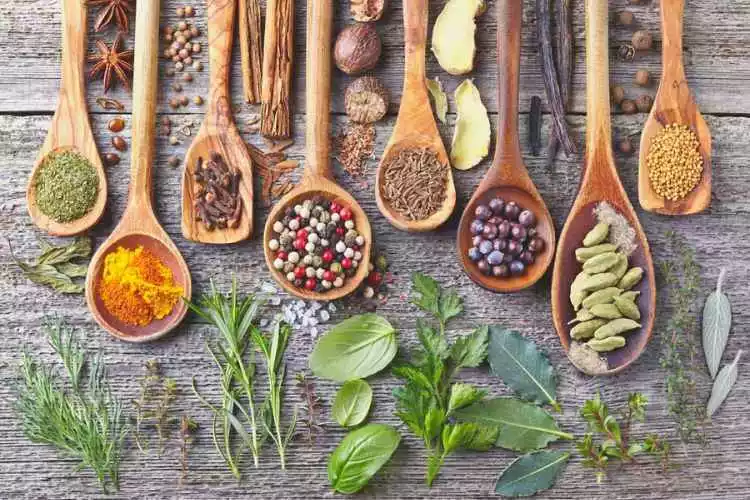
Depending on their region, the taste and aroma may vary slightly. In this article, we’ll dig a little deeper into the world of the most popular spices produced by orchids.
Table of Contents
What popular spice comes from orchids?
Orchids are seen as a symbol of peace and calm. It’s common to find them in day spas, massage parlors, and natural medicine or homeopathy establishments. They can be a stress reliever with their sweet aromas and unique growing characteristics that are borderline perfection.
The cherry on top is that some species can also produce a beautifully smelling and tasting spice.
2 widely used ingredients can be extracted from certain species of orchids. These spices are vanilla and salep. Vanilla is the most common of the 2, but salep is slowly gaining traction in the popularity stakes. Let’s look at the 2 mentioned spices in a little more depth.
Vanilla
There are 2 largely known varieties of orchids (V. planifolia and V. x tahitensis) that produce beans/pods which contain vanilla extract. Due to orchids often requiring difficult to acquire growing conditions, they can be seen as more expensive to grow and produce the pods.
V. planifolia (a.k.a flat-leaved vanilla or West Indian vanilla) is native to the tropical forest regions of both Mexico and Belize. This species is slowly becoming rare due to its habitat reduction and overexploitation. This is the more potent, earthy variety we know as bourbon vanilla.
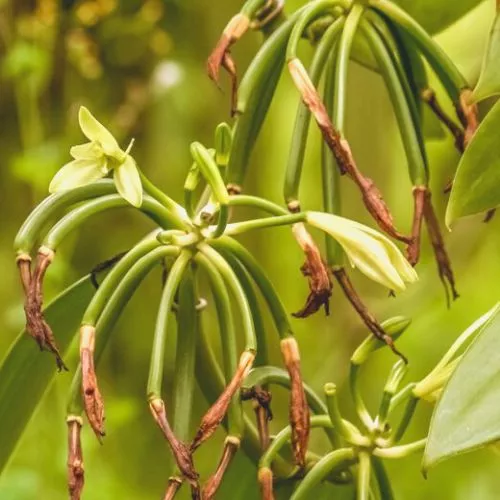
On the other hand, v. x tahitensis (a.k.a Tahitian vanilla) is native to Tahiti, French Polynesia, and New Guinea. This variety was discovered first and then sent to Mexico, where it could be reproduced and cross bred. The flavor produced by the Tahitian vanilla is more of a floral, aniseed-tinted one.
Production
The pods’ preparation and contents can span upto 4-5 months. The pods are removed just before becoming ripe; they are then submerged in hot water and dried in the less harsh morning sun. This usually consists of 3-4 hours per day for upto a month per cycle.
During the remaining daily hours, the pods are stored on sheets inside crates to encourage them to sweat. Over time the pods shrivel up and shrink. This process runs cyclically alongside smoothing out and flattening leading up to being sorted.
Once this phase is complete, they are placed in a low light, ventilated location to decrease humidity. Then it’s on to sorting by quality and length. Lastly, they are boxed to help refine their fragrance and taste.
This takes between 60-90 days. At this stage, quality tests have been taken, and the pods are free to be sold for further manufacturing or selling.
Salep
Salep or saloop isn’t exactly classified as a spice but is used similarly. This ‘spice’ is extracted from the tubular roots of specific orchid species. The most common variant is the Anacamptis pyramidalis or Dactylorhiza romana, found in Anatolia, Turkey.
This ingredient is extracted and ground into flour, which is used in several ways. It can be mixed with water and consumed as a traditional winter drink in popular restaurants and cafes in Turkey. It can also be added to desserts for that extra aromatic kick.
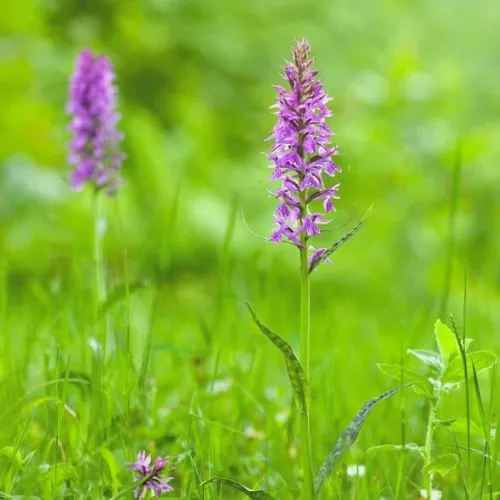
The flavor is said to be almost nonexistent but is well complemented by ingredients such as cinnamon, milk, and sugar. You could say that it is slightly starchy with a mellow milk hint.
There is speculation surrounding whether it has been banned as an export item due to its ‘potential’ aphrodisiac, stimulating, and/or medicinal properties.
Production
Producing Salep requires the removal of the plant’s roots which, of course, kills the plant as a result. This makes producing Salep both expensive and, in turn, becomes more of a rare luxury ingredient. The roots are stored for 1-2 months to dry and ground into yellow flour. The flour is sold and used as required.
What orchid is used as a food flavoring, and what part of the plant is utilized?
Like many flavoring ingredients, vanilla can be extracted from over 150 species of orchids. Each plant has its unique aroma and taste, which can differ slightly from others.
Besides Salep, which isn’t a spice but an ingredient created by grinding root tubers into flour, Vanilla flavoring is the only food flavoring that an orchid can produce.
The 2 most common species and largest producers of this world famous flavor are the V. planifolia and V. x tahitensis.
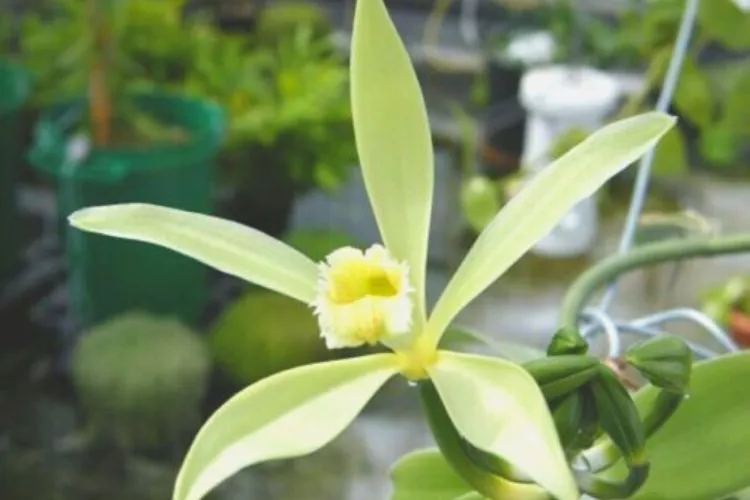
The biggest issue surrounding its production is having an optimal growing environment. In the wild, orchids thrive best in bright, indirect sunlight. Furthermore, high humidity levels and adequate root aeration are essential. So, replicating these conditions can become difficult.
Retailers rely on the plants grown and manufactured in their natural locations. This makes their byproduct a lot more expensive to transport and sell. The demand is high, and the supply is low. Therefore, scarcity dictates the price.
Furthermore, the process required is quite labor-intensive and cannot be mimicked by mass production. The pods must be carefully selected, washed, dried, handled, refined, and tested before being sold. A lot of hand work is involved, and pollination isn’t always guaranteed. The pollination rate is lower than 5% per plant, making them all rarer.
Are vanilla orchids edible?
Most species of orchids can be picked straight at the flowers and eaten. Vanilla orchids are no different. They are not considered poisonous in any way. Although, there are noted cases of experiencing mild gastrointestinal discomfort. No need to eat vanilla orchids unless their pods are picked, processed, and consumed in edible form.
Vanilla planifolia can irritate the skin, so it’s best to avoid chewing on and swallowing something of that nature. Lastly, if you’re thinking about serving up some flower petals in a salad for aesthetics, it’s worth confirming that any possible guests don’t react to certain pollen they may be allergic to.
What are orchid beans?
Orchid beans are another name for the pods containing the flavor enhancer we know today as vanilla extract. These plants are simply known as vanilla, and the growth method is quite fascinating. Surprisingly, the vanilla orchid produces flowers for an extremely short period, usually 24 hours.
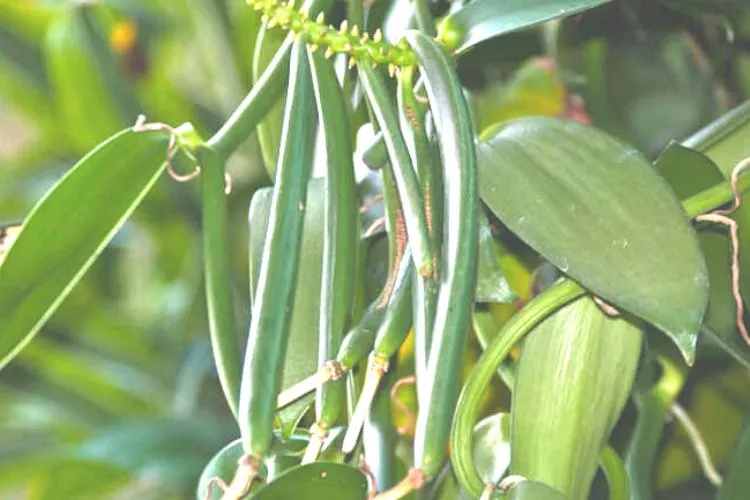
During this span, the flowers must be hand pollinated to produce the vanilla beans. Hand pollination includes using a small paintbrush to rub the flower’s pollen across the blossoms.
Once matured, the beans/pods have an elongated, green shape that looks very similar to your average green beans. They are generally grown in bunches and hang downwards along a compact vine.
Conclusion
Ah, vanilla, that wonderful, smooth aroma, and taste that everyone knows and appreciates today have endured quite a journey from growing the orchid to them blooming for a day to being pollinated in one swift, precise moment. Then waiting for the pods to appear, followed by picking, curing, processing, and transporting.
The long-awaited process boggles the mind. We are lucky to pick up the result from the local supermarket, that’s for sure! We hope this article has helped shed some insight into the world of orchids and their extracted spices. As always, happy growing!


